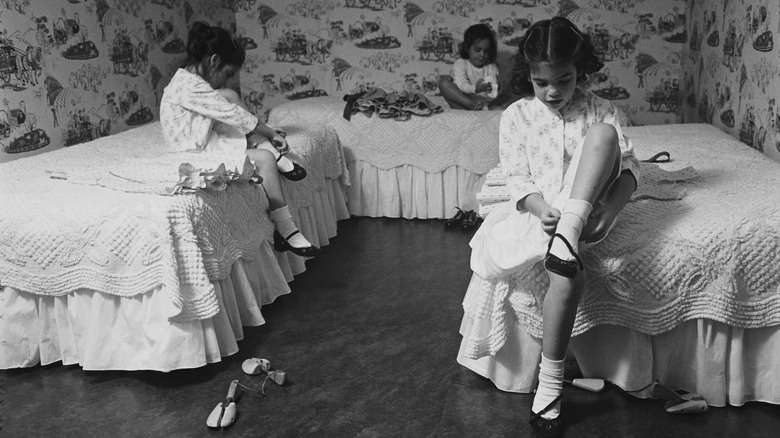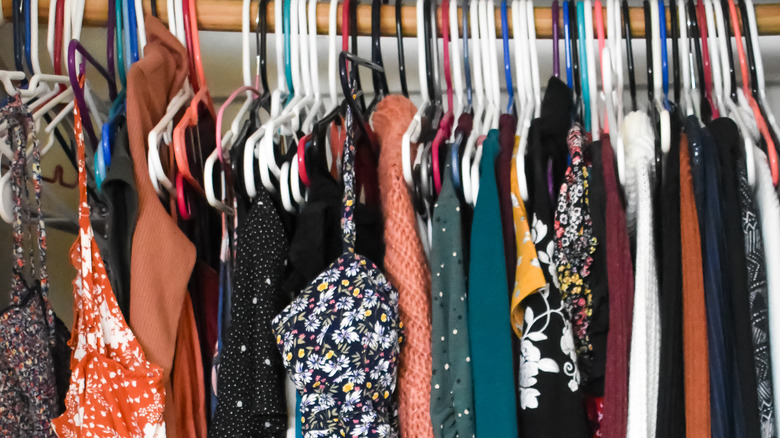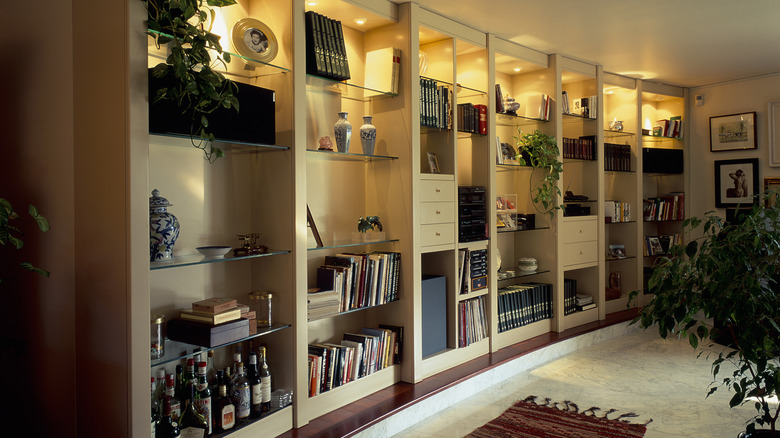Love It Or List It Gets Clutter Wrong (& Sets A Slippery Precedent)
Let's face it. No one actually likes to be surrounded by clutter. Just because we don't like it, though, that doesn't mean we want to purge it all and go full-on minimalist.
HGTV's "Love It or List It," in many ways, reflects Western society's philosophical dichotomies. London-raised Hilary Farr hates clutter and will create built-in cabinets and cubbies in every room to hide it. Her Toronto-born co-host, David Visentin, revels in showing spacious homes to the television guests, embracing America's more-is-better culture, embodying the adage of belongings expanding to fill available space. Yet, even taking into account Hilary's and David's differences on the subject of clutter, the show's depiction of this subject may be setting viewers down a slippery slope. Why? Because in the end, the overall message is that (1) too much clutter is bad, and (2) to accommodate it, you need to upsize your house.
Now, are average people and families in the United States actually more predisposed to be the "hoarders" that viewers claim? Is there truly a problem with that Wild West-style need for wide open spaces? There's a debate to be had here, but the notion of expanding to accommodate clutter, as well as its opposing argument that all clutter needs to be thrown out, both miss the far more sustainable solution: we just need to prioritize organizing it.
Once upon a time, in a shared bedroom in a small house...
Cultural changes in the way people from the United States view their living spaces are a driving force behind some of the changes in expectations about domiciles, and the clutter that collects in them. For example, bedrooms: in most "Love It or List It" episodes featuring children, the kids either have their own bedrooms, or the parents ask Hilary to create space for separate rooms. The United States wasn't always a place where every child had his or her own room, but the genie is out of the bottle, and Genie likes having her big bedroom all to herself.
In 2021, CBS News polled Americans to assess how many adults shared a room with siblings when they were children, and they discovered that about 60% shared a room during some period of their childhood, 30% never did, and about 9% didn't have a sibling with whom they could giggle or fight with at night. Those stats varied by the age of the respondent, however. Older adults were much more likely to have bunked together (72% of those aged 65+) than whippersnappers in the 18-34 age group (49%).
Few things embody the American "more, more, more" mindset in home design than this changing tide. When you take something like this into account, it's easy to see why so many people think the solution to clutter is to add more space or more rooms — much like how, these days, the desire is for each child to have their own room. However, no matter how big you go, organization is key. If you don't have the built-in cabinets shown on "Love It or List It," you'll soon revert to where you started.
One person's clutter is another person's treasure
Clutter isn't inherently "bad." What seems like unnecessary clutter and hoarding to one person could be sentimental treasure to another. The question isn't how much stuff you have, but rather, how meaningful, and whether you actually use it or care for it.
There are many root causes behind clutter. People who hold onto a lot of things might just be bad at getting rid of their possessions, yes, but they also may lead busy lives and be constantly on the go. Who has time to do laundry? Just buy another three-pack of your favorite brand. Likewise, if you have a high-voltage career and a stable weight, why not purchase that power suit in navy, gray, and black? On the other hand, if you're holding onto the Mexican serape poncho you bought on a 1988 trip to Tijuana that you'll never wear again, no amount of great American closet space should entice you to hold on to it.
While few things are as one-size-fits-all as a poncho, this is no time to say that one solution (e.g., clear out the clutter and move into tiny homes) will fit everyone. The slippery slope here is that someone else might be guilting you into tossing the serape with the kind of tough love Hilary Farr is known for, but others will suggest building a new closet just for memorabilia. What's really needed is the third option: go through, organize, find a proper place for everything, let go of the clutter you really don't intend to come back to, and focus on the things you truly value.
Too much stuff? Time to face the music
Sometimes, you really do need to clean out a bunch of clutter. "Love It or List It" has remodeled everything from attics to basements, porches to powder rooms, and mudrooms to music rooms. If you live in a home that's filled to the gills with collectibles and sentimental things, if it has clothes in all four sizes you've worn throughout adulthood, if you still have most of the baby toys your youngest played with (and that baby just entered her third decade), it's time to rid yourself of a few dozen boxes of belongings.
There are ways to approach that task, even if it's a daunting one. What you shouldn't do is add new rooms to contain that clutter, or throw everything away without thought or feeling. If you live in a home that feels very cramped because it's full of stuff, you need to figure out ways to stash it, sell it, display it, or dump it. Honesty is the first key to preventing a slide down the slippery slope to Clutter-town. Really think about whether each item actually brings you joy or nostalgia, or if it just stresses you out.
Tackle just about any home organizing project by following a few tried-and-true methods: Focus on one room (or space) at a time. Enter with a mindset of touching things only once, if possible. Put everything you touch or relocate into one of four boxes: keep, sell, donate, or trash.
Keep what makes you happy, organize it, and live how you want
Again, there's truth to the stereotype that Americans love big homes. If you don't have a big house now, you "list it" and get one, or you remodel and expand until you "love it." Even though "downsizing" entered our vocabulary some time ago, most Yanks don't want to do it until they're well into their twilight years. Expansion shouldn't come without organization, however. And throwing all your stuff into a dumpster isn't productive, either. With clutter, it's important to do the work, tedious as it may sound.
Perhaps you had an examination of conscience and a brutally honest look around the house that culminated in a muffled shriek of horror, but if it didn't send you to the digital Yellow Pages looking up real estate agents and estate auctioneers, there's still a chance to turn things around and get your clutter organized before you slip into hoarder territory. And if you're not part of the big home crowd, and you live in an apartment or small house where residential square footage is nominal, you need to maximize your storage space. From investing in multi-purpose furniture like murphy beds to creating dedicated spaces for important keepsakes, you can make a small place feel much bigger.
First, though, you have to declutter. It always ends up starting there, doesn't it?




